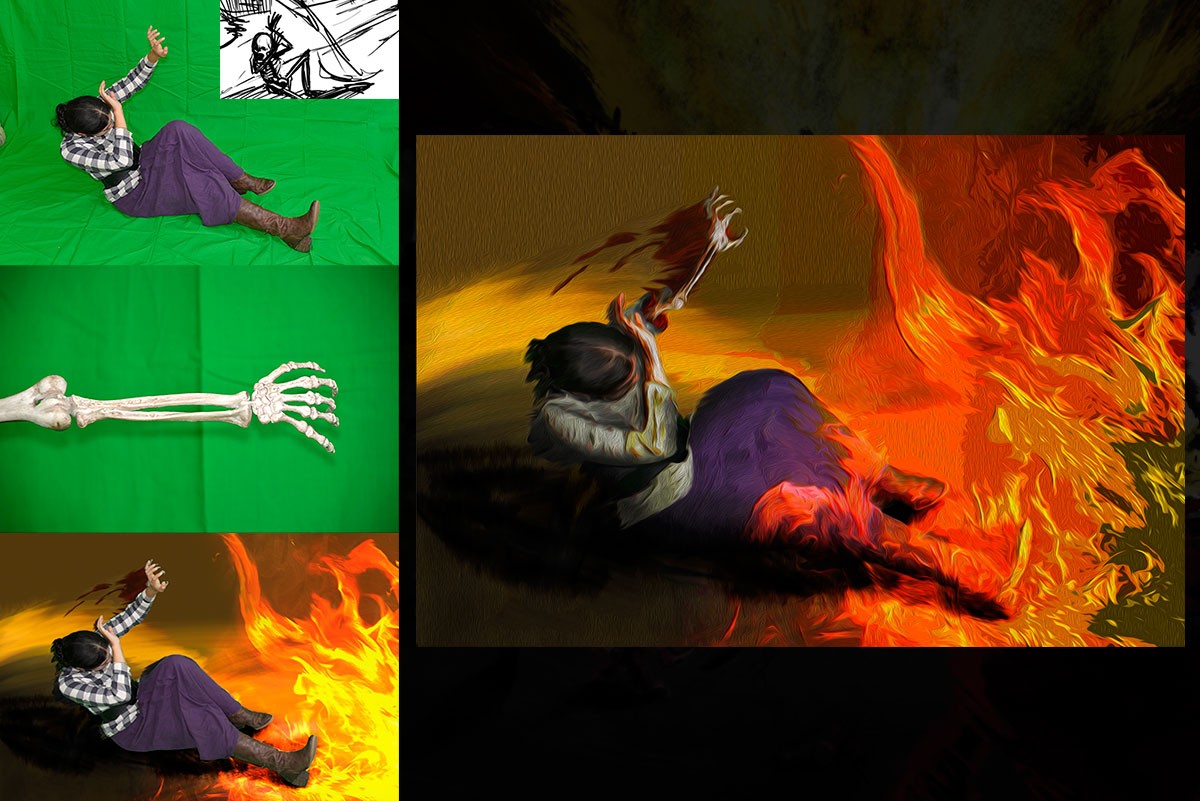How I learned to stop worrying and just paint.
In September of 2013 during a period of working on tons of corporate-style videos and a quirky animation starring a blowfish and DNA primers, I received an email from SModCo inc.’s Ken Plume, asking if I would be interested in animating a painting of the Halifax explosion of 1917 for Kevin Smith’s latest film, Tusk. Being a regular listener of SModCast (Kevin Smith and Scott Mosier’s podcast), I was already familiar with the film, and had been following it since first hearing them giggle over the now infamous Gumtree ad and conceiving the entire plot of the movie right there. It was fascinating to hear the creative process and be there for what would ultimately become a full-length feature film. I had worked on a SModCo project previously, animating a section of dialogue from SModcast 193, so I was excited to work with them again. At the offset, the project sounded like it was mostly going to be an exercise in 2.5D animation. Take high-res painting file, break up into layers, clone out background, set in 3D space, animate. With the information I was given, and my love of SModCo podcasts, I naturally accepted the gig. It wasn’t until I received the first source files and full creative brief that I realized exactly what I had gotten myself into.
As it turned out, the source I received was a sketch, and the brief not only called for the creation of the animation from the painting, but the painting itself. This wouldn’t have been a problem except, I don’t paint… At least, I didn’t before now.
The first thing I did upon realizing I would need to create the painting myself, was to research a number of tutorials on converting photographs to oil paintings, and buy a green screen and lights. My wife served as the main model, along with a skeleton that she found and purchased for the gig). My friend Steve, a photographer with all the gear we needed, came over to help set up the studio in my basement, and we went to work recreating the poses in the sketch. To create the effect of bone erupting from beneath the skin, we posed the skeleton in approximately the same way we posed our model. The idea being that we could match the angles, doctor the photos together, and create the painted affect once we were finished.
Once I had all the photos of people I thought we’d need, I went about the process of zooming into the massive 5K images we shot and, using the smudging technique in the previously linked tutorial, went about making them look like classical oil paintings. Since this process was time-consuming, we started with the person in the corner of the composition with their hands in front of their face before tackling the entire piece. Turned out to be my best idea ever!
The end result was very satisfying. What started as two hokey photos of my wife and a prop skeleton arm on a wrinkled green screen became a woman in agony over the flesh being blown off and burned from her bones. Unfortunately, this take (while striking), was far too graphic and detailed for what we needed. In the scene, Wallace walks up to the painting and asks what it is. If the entire thing had this level of detail, it’d be pretty clear right away that he was looking at people being burned in an explosion. While this approach was ultimately scrapped, I’m still very happy with the result, and had the opportunity to add a few more tricks to my ever-expanding bag. Maybe one day (when I have actual time), I’ll go in and make this version of the whole painting… Maybe…
Next up! See what happens when I ditch the green screen, and decide to roll up my sleeves and just paint.
Don’t forget to yell at my buddy Steve if you need some expert photography done. He showed up on crazy short notice to shoot tons of pictures and build lights and stands for me.






Comments are closed